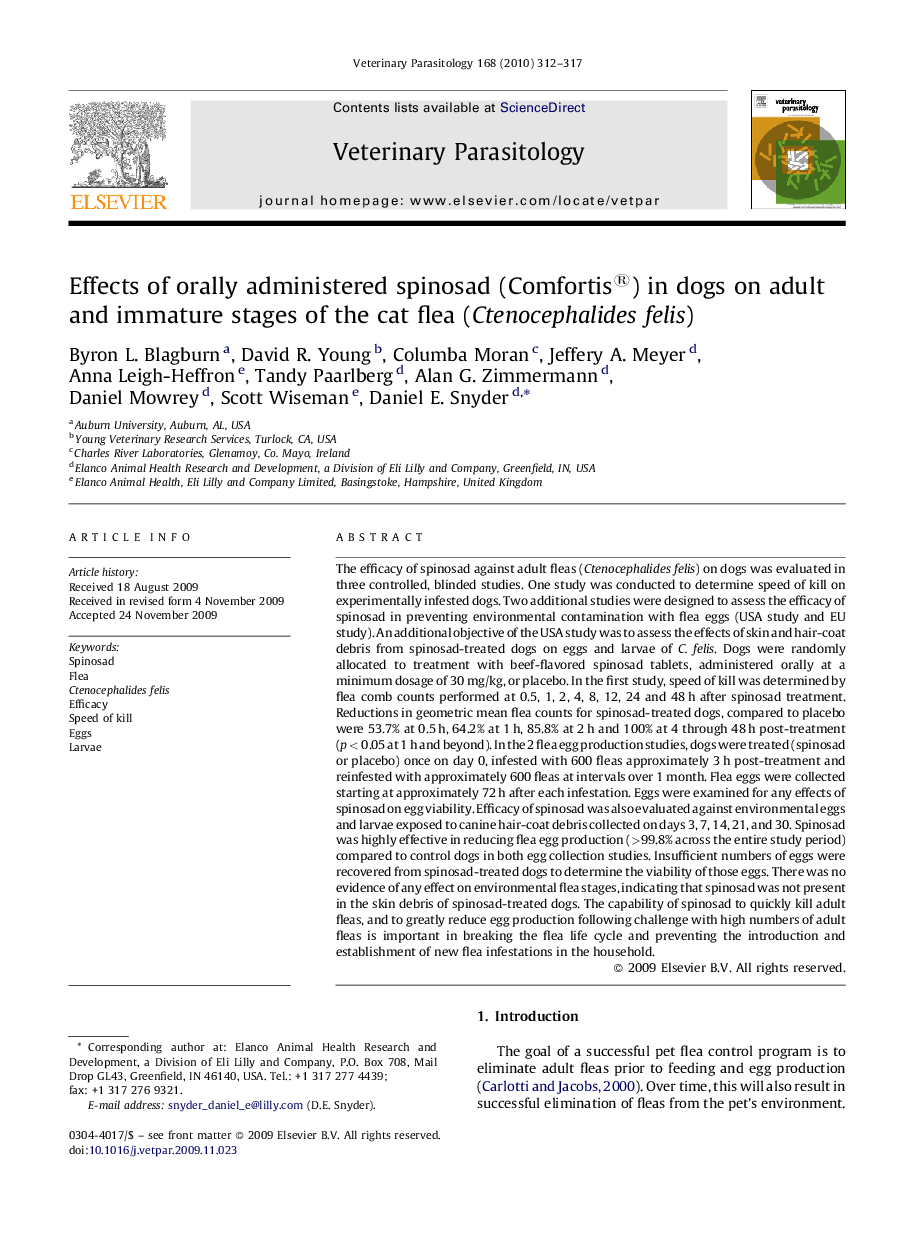| کد مقاله | کد نشریه | سال انتشار | مقاله انگلیسی | نسخه تمام متن |
|---|---|---|---|---|
| 2470793 | 1555744 | 2010 | 6 صفحه PDF | دانلود رایگان |

The efficacy of spinosad against adult fleas (Ctenocephalides felis) on dogs was evaluated in three controlled, blinded studies. One study was conducted to determine speed of kill on experimentally infested dogs. Two additional studies were designed to assess the efficacy of spinosad in preventing environmental contamination with flea eggs (USA study and EU study). An additional objective of the USA study was to assess the effects of skin and hair-coat debris from spinosad-treated dogs on eggs and larvae of C. felis. Dogs were randomly allocated to treatment with beef-flavored spinosad tablets, administered orally at a minimum dosage of 30 mg/kg, or placebo. In the first study, speed of kill was determined by flea comb counts performed at 0.5, 1, 2, 4, 8, 12, 24 and 48 h after spinosad treatment. Reductions in geometric mean flea counts for spinosad-treated dogs, compared to placebo were 53.7% at 0.5 h, 64.2% at 1 h, 85.8% at 2 h and 100% at 4 through 48 h post-treatment (p < 0.05 at 1 h and beyond). In the 2 flea egg production studies, dogs were treated (spinosad or placebo) once on day 0, infested with 600 fleas approximately 3 h post-treatment and reinfested with approximately 600 fleas at intervals over 1 month. Flea eggs were collected starting at approximately 72 h after each infestation. Eggs were examined for any effects of spinosad on egg viability. Efficacy of spinosad was also evaluated against environmental eggs and larvae exposed to canine hair-coat debris collected on days 3, 7, 14, 21, and 30. Spinosad was highly effective in reducing flea egg production (>99.8% across the entire study period) compared to control dogs in both egg collection studies. Insufficient numbers of eggs were recovered from spinosad-treated dogs to determine the viability of those eggs. There was no evidence of any effect on environmental flea stages, indicating that spinosad was not present in the skin debris of spinosad-treated dogs. The capability of spinosad to quickly kill adult fleas, and to greatly reduce egg production following challenge with high numbers of adult fleas is important in breaking the flea life cycle and preventing the introduction and establishment of new flea infestations in the household.
Journal: Veterinary Parasitology - Volume 168, Issues 3–4, 25 March 2010, Pages 312–317